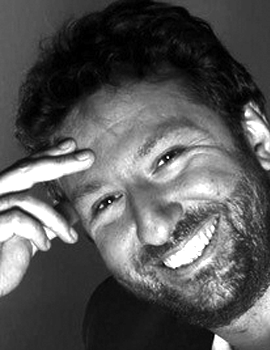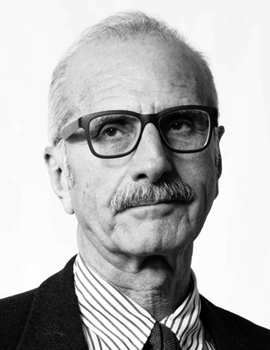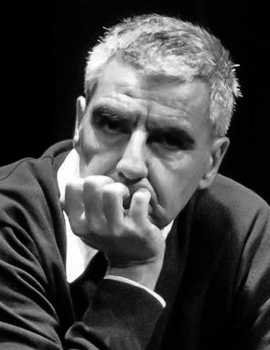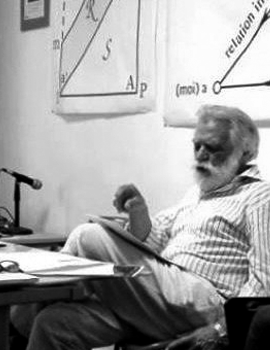Social psychology according
to Freud
One hundred years later.
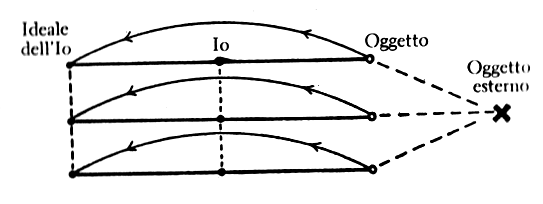
The external object is the person who will become Führer, insofar as it replaces an idealized object. Paradoxically, therefore, according to Freud a group always forms narcissistically. Narcissism is precisely a replacing of object love with something idealized, which for Freud is above all an idealization of oneself. For this reason, Freud opposes the love couple to the collective, as its biggest threat and limit. The love couple is not narcissistic. If – like Paolo and Francesca or Romeo and Juliet – it is the epitome of Eros, the erotic couple is a deadly threat to the Masse, to the collective. The couple is always centrifugal from the Eros of the Masse: paradoxically, sexual Eros tends to destroy the erotic bond of a group. For Freud sexuality is de-socializing. After all, all societies that aim at an extremely solid social bond – theocratic regimes, Communism – always end up devaluing couple relationships, they are sexophobic societies.
Conversely, Freud describes hypnosis – which he had himself practiced for years – as a crowd of two. Which simply means he believed that every group is hypnotic. “A group is a dream” Jean-Bertrand Pontalis said. But, in contrast to his predecessors, Freud wasn’t interested whether a group is or is not the sleep of reason; he was interested in saying that groups are hypnosis, and in hypnosis there is always someone who is commander, the hypnotist. In this way Freud innovated compared to a previous tradition that based groups on mutual imitation among members. Mutual imitation is not the essential point (unlike in hysteria). Collectives are not hysteric, they are fascist: they are always hypnotized by a Führer.
Some may object that this is not always true. We could say that if millions of human beings followed Stalin or Mao it’s because Stalin and Mao in turn personified an ideal: Communism. It is not enough for someone to present him or herself as a Führer, this someone must also be inspired by a shared ideal. But the point is a different one: lots of people believe in Communism, but they stay home, they don’t become involved with political parties or unions, they don’t join “groups”. For an ideal to attract a crowd, for someone to be prepared to kill or be killed for an ideal, a Führer is required. For Freud politics always exploits, to the very end, narcissistic identification with a leader.
Of course, such an image of the collective could not be accepted by Freudo-Marxism, from Fromm to Žižek, from Wilhelm Reich to Badiou, from Marcuse to Althusser… Marxism has a Hegelian mold, it believes in a collective Reason that does not culminate in fascism. Hence a certain embarrassed marginalization of this text from the official Freudian Canon.
Note that Freud himself was the Führer of a collective, the psychoanalytical one. And we know only too well, alas, how much fascism there has been in the history of psychoanalysis as an institution: expulsions, intolerance, wars of succession, conflicts over intellectual legacies.
There is, however, something missing in Freud’s theory. Something not even added by W.R. Bion, author of a group theory that restructures and enhances Freud’s.
In collectives, Freud only sees idealization processes, idealizing alienation. Had he been familiar with Carl Schmitt, he would have seen how a group is always based on the difference between friend and enemy. For Freud – who does mention armies in the essay – a group does not need an enemy; it need not necessarily elect an enemy. In actual fact, any collective is always based on a difference, which can turn into hostility or war, between an us and a them. Who the us are and who the them are is of no importance.
M. Klein spoke of a splitting of the object into good and bad. We can say that when the external Object takes the place of the Object of each of us, its idealization splits this Object, in the sense that a part of it identifies with the Ego Ideal and another part takes a different route, that of ejection, and is like thrown back into the real.
Beyond the process of idealization, therefore, we have to look at its revers, its sinister fold, which psychoanalysis hasn’t named but which I would call debasement, the reverse of idealization. Every collective self-idealization produces a discarded object, a scrap, an expulsion (which, according to Freud [“Die Verneinung”], is the matrix of the real itself), something that Lacan tried to explain, I think, with the concept of object a. Because a is certainly a scrap, a “piece of shit”, but it is also, or can also become, a splendid precious object, an Agalma, as we shall see. I therefore propose to complete the Freudian diagram as follows:

In “Mourning and Melancholia” Freud said that in melancholia the shadow of the object falls on the ego (meaning that the shadow of a hated object falls on the ego, thus the ego itself becomes hateful). In every group, insofar as it is a collective of us-versus, idealization throws as its shadow a discarded object in the overturned space of idealization. The other as discarded object will always trouble the nights of even the most tolerant groups.
And in fact, even when a society is extremely tolerant and open – for example, Norwegian society today – it produces (or finds?) an Anders Breivik, the terrorist who killed 77 people in that country in 2011. A tolerant society will always find an intolerance to quash. Terrorist intolerance is today the shadow that “soils” the idealized image of openness and tolerance that European societies offer of themselves. Intolerance always ends up producing the intolerance of the tolerant.
But this discarded object very often slips into a process which is the opposite of debasement, one I would call of “reassessment”. In this way, the discarded object, like the Lacanian object a, climbs back up to the position from which it sets itself forth as Führer. It is a mysterious process, but one that finds thousands of confirmations, particularly in religious history. I’ll limit myself to the case closest to us, to Jesus.
Significantly, the cross remains the principal symbol of the Christian faith. The cross was an atrocious form of torment that the Romans inflicted mainly on slaves and that Jesus, the outcast among outcasts, underwent. Abandoned by his disciples and by the people, Jesus sinks into the lowest condition that was conceivable at the time: the κενωσις (kenosis) that Christianity gives such great importance too. But it is precisely this absolute abjection that makes him, in the eyes of his apostles and worshippers, the Christ, the Messiah, even equivalent to God Himself. We can find this process of reassessment, often hyperbolic, of the discarded object in nearly all the Great Collectives, not only in religious ones. The discarded object turns from being an enemy into no less than the Führer of the new Collective, there where the sun of the future shines.
It could be argued that there are some absolutely good-natured and tolerant societies, like certain religious orders, like the Franciscans, for example. But the story of Francis of Assisi – sackcloths, mortification of the flesh and a crude search for an even moral mortification – shows that this extreme tolerance towards outsiders has to be paid for with an extreme intolerance towards oneself, which replaces the discarded object. But sometimes even Franciscan masochism turns outwards. Thus, in the fifteenth century the Franciscan Bernardino da Feltre actually became a ferocious persecutor of Jews, even accusing them of imaginary infanticides.
Some might argue that rigid caste systems, like the one that still prevails today in India, don’t allow this “upswing”. The Untouchables, the Dalit (the oppressed) are impure for the superior castes and are therefore given the job of cleaning up their excrements. But it is unthinkable that a Dalit could become a Führer. Yet Gandhi, who belonged to the superior castes and even supported the caste system, presented himself as the Führer of India dressing, or better, stripping down to, the robes of an Indian peasant, or rather a fakir. He needed to disguise himself as a discarded object to take on the legendary position he holds in India and beyond.
This is how what I would call the Samsara of human political alienation takes shape, the circle that never really ends, between processes of idealization and processes of debasement.
Completing the Freudian diagram in this way, we could find again a circularity accounting for historical dynamics, those that lead on the one hand to collective identifications (“us”) and on the other to conflictual struggles against the other as a scrap (“them”).






